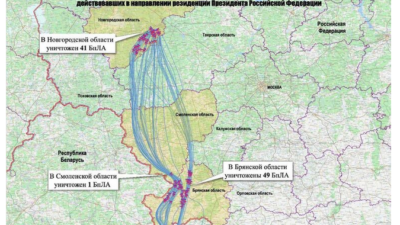Dimitris Chatzidimitriou: A short lesson for those who parrot Turkish claims
24/07/2020
If Turkey has achieved anything with the steady promotion of its aggressive policy, it is that it has managed to convince, in addition to some international actors, a section of Greek commentators, who have great access to domestic media. They also show noteworthy persistence, verging on obsession, in projecting their views that Ankara seeks dialogue, which Athens rejects, although some go further by accepting the Turkish allegations! !
In this regard, the success of Ankara is the overcoming of the impression that there are differences between the two countries to be resolved and not unilateral Turkish claims, on which Athens is called upon to agree that they are the subject of negotiations. Despite the well-established impression to the contrary, all Greek governments, since 1974, have tried the process of dialogue and negotiation with Turkey, which the latter perceives as a method of enforcing its agenda, as life and reality of bilateral relations have shown.
Both Konstantinos Karamanlis, in his voluminous Archive, and Dimitrios Bitsios, as Foreign Minister of that period, have written in detail about their efforts for Turkey to accept for discussion and to bring before the International Court of Justice in The Hague the delimitation of the continental shelf, and have highlighted Turkish backtracking (eg the Karamanli-Demirel agreement in Brussels and the withdrawal of this by Çağlayangil in front of Bitsios in Rome).
Similarly, a dialogue took place during the 1980s, with the PASOK governments, as of course later with the successors of Andreas Papandreou (Costas Simitis and George Papandreou), while Konstantinos Mitsotakis was also in favor of the Greek-Turkish dialogue and more recently Alexis Tsipras. To the bona fide question, “why do Greek prime ministers fail to reach an agreement with their neighbors”, the answer stems from the content of the agenda that Turkey is trying to impose in a bilateral dialogue.
After the crisis in Imia, in 1996, Ankara maintained, in every way (officially and unofficially) that as Greek-Turkish differences it considers the range of territorial waters (6 or 12 nm), the continental shelf, airspace, the FIR and its control area, Search and Rescue Operations in the Aegean, the presence of military on the islands of the eastern Aegean, the sovereignty of the Aegean islands (gray areas) and the Muslim minority of Thrace.
The agreements of the 19th century
The Eastern Mediterranean has now been added to the list, with Ankara clearly intending to cut off Greece, a predominantly naval nation, from an area in which Greeks have existed since the dawn of history. Ankara invokes, as having direct or indirect relations with the Aegean, the following treaty-agreements: The Treaty of Adrianople (1829), the London Protocol (1830), the Treaty of London (1913), the Treaty of Athens (1913) ), the Treaty of Lausanne (1923), the Treaty of Montreux (1936) and the Peace Treaty of Paris (1947).
At the same time, one should recall that Turkey has not signed – although it is bound by their customary dimension – the Geneva Convention (1958) on territorial waters and coastal areas, the Geneva Convention (1958) on the continental shelf and the UN International Convention (1982) for the Law of the Sea.
Ankara insists that there are more than 2,000 islands, islets and outcrops in the Aegean, “which directly and decisively affect all the problems of the Aegean”, with the status of many of them being indefinite and therefore subject to negotiation. Turkey accuses Greece of “wanting to make the most of the rights deriving from the sovereignty over these islands that were granted to it as a gift of geography and history.” (Sule Kut, professor at Marmara University).
According to Ankara, “the Aegean, and this is a key position, is a semi-enclosed sea, which must be placed under a special regime and in the problems related to it to find specific solutions beyond the general rules and principles provided by international treaties” (!), (op.cit.). The same list of “disputes” to be resolved and the exact same phraseology is being, now, repeated by Erdogan’s right hand man, Ibrahim Kalin.
Economidis’ response to the Turkish allegations
The late Professor of International Law (Head of the Legal Service of the Ministry of Foreign Affairs), Konstantinos Economidis, had responded to Turkey’s objections in detail and with a due reference to the International Treaties-Conventions (“The islands of Imia in the Aegean Sea, a difference created by violence “, Sakkoulas Publications 1999). Economides noted that with the Treaty of Lausanne, Article 12, “the islands lying less than three miles from the Asian coast remain under Turkish sovereignty,” and all other islands in the Aegean and Eastern Mediterranean are assigned to Greece, “without any discrimination or restriction “.
An important aid in understanding the subject is the book written by Konstantinos Economidis and Hussein Pazartzi (heads of the Legal Services of the Ministries of Foreign Affairs of the two countries, (GNOSI publishing 1989), on the legal status of the Aegean islands. Greece has a state that lacks institutional memory, citizens who are easily subverted and journalists who are easily persuaded by the “arguments” of the other side, due to intellectual languor.
The 1985 document
And yet, Greece which is criticized as “uncompromising and rejectionist” has announced the framework of the dialogue it would be willing to conduct with Turkey. No national secret is revealed from the reminder-disclosure, now, of the announcement delivered to the Turkish Ambassador Nazmi Akiman on November 14, 1985.
Through this document, Athens clarified “the elements that make up the status quo, as well as the rules of international law and international practice that Greece considers non-negotiable issues, as any change would affect its territorial integrity and national sovereignty.” As underlined in the document (exact copy from the relevant file) these details are:
- For the islands of the eastern Aegean, the status quo is determined by the Treaty of Lausanne of 24 July 1923, in conjunction with Article 51 of the Charter of the United Nations. (author’s note: the right to legitimate defense, before which all other provisions of the Charter must bow).
- For Lemnos and Samothrace the status quo is determined by the Treaty of Lausanne, the Lausanne Convention and the Montreux Convention of 1936, in connection with the statement of the Turkish Foreign Minister Aras before the Turkish National Assembly and the letter of the Turkish ambassador Esref, of 6 May 1936 to the then Minister of Foreign Affairs I. Metaxas.
- For the Dodecanese, the Treaty of Paris of 10 February 1947, in conjunction with Article 51 of the Charter of the United Nations.
For the Littoral Zone, the provisions of International Law in conjunction with Article 3 of the UN Convention on the Law of the Sea and the official Turkish declaration, in 1956. (author’s note: width 12 nm). - Particularly for delimitation, the equidistance line as defined by Customary Law, the Geneva Convention of 1958, Article 12, paragraph 1, and the Convention on the Law of the Sea, Article 15.
- For the demarcation in the Dodecanese, the two Italian-Turkish agreements of 1932, which apply the equidistance line, maintaining the agreements that are part of the territorial status of the Dodecanese (1978 UN Convention on the Succession of States to the Treaties, Article 11).
- For the delimitation of the continental shelf, the Customary Law and the Geneva Convention of 1958, Article 1 and the new Convention on the Law of the Sea, as well as the rulings of the International Court of Justice for the North Sea continental shelf (which) clearly state that the their own continental shelf and demarcation can only be understood on the basis of the equidistance principle. Greece has accepted the appeal to the International Court of Justice as an alternative.
- Airspace. The Presidential Decree of September 1931, determines the width of 10 miles. The difference between sea and national air space is completely in line with international law, given that Greece then had and still has the right to extend the coastal zone.
Status quo
Another element of the status quo is the long-term acceptance by Turkey, as evidenced by existing communications. (author’s note: A Greek professor of International Relations wrote that it is a shame to put forward this argument, citing the ignorance of the Turks!).
- Especially for the partial defensive arming of the islands, one should mention article 2 par. 4 of the United Nations Charter on countermeasures in case of threat of violence against the territorial integrity of the country.
- Finally, the status quo in the Aegean is determined by Article 16 of the Treaty of Lausanne, by which Turkey waives “every and any right or title” outside the borders established for it.
Ankara’s response came amid a flurry of negative reports in the controlled Turkish press. Over the years, it has become clear that what Turkey means as a dialogue-negotiation is accepting its expansionist demands by adapting international law to its revisionist aspirations. But, this is a small detail that escapes the attention of the proponents of dialogue and negotiation at all costs.





